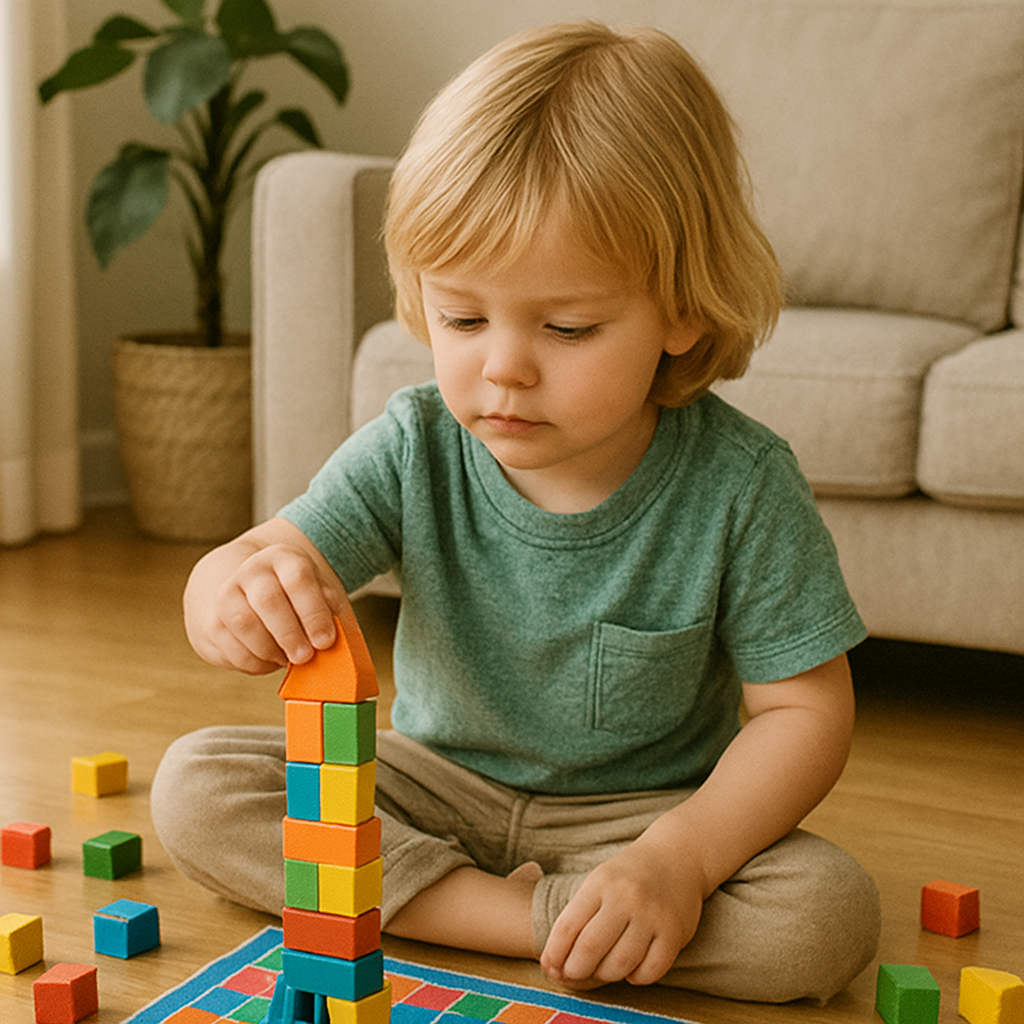
What Children Learn from Playing with Building Blocks – Backed by Research
Share
Building blocks may seem simple — colorful shapes stacked into towers, castles, or rocket ships. But beneath this playful activity lies a powerful engine of cognitive, physical, and emotional development.
In this post, we’ll explore the deep educational benefits of block play for children, supported by research in developmental psychology and education.
🧠 1. Spatial Intelligence and Geometry Skills
Block play is strongly linked with the development of spatial intelligence — the ability to visualize, manipulate, and reason about spatial relationships. According to a study in Child Development (Casey et al., 2008), preschool children who frequently played with blocks performed better on spatial tasks and later excelled in STEM-related areas.
“Block building was a significant predictor of spatial visualization and mental rotation performance.”
— Casey BM et al., Child Development, 2008
This foundation is especially important as spatial reasoning is critical in math, engineering, and science.
✋ 2. Fine Motor Skills and Hand-Eye Coordination
Manipulating small blocks, balancing towers, and fitting pieces together all refine a child’s fine motor control. A study in Early Childhood Research Quarterly (Pepler & Ross, 1981) found that children who engage in structured block play develop stronger hand-eye coordination and fine motor precision compared to their peers.
These skills directly support other activities like writing, drawing, and tying shoelaces.
🧩 3. Problem Solving and Logical Thinking
Block play is often a puzzle: Which block fits? How tall can I go without it falling? What if I move this piece?
According to Developmental Psychology (2014), constructive play like block building encourages iterative problem-solving — children test hypotheses, experience failure, adjust strategies, and try again.
“Constructive block play promotes exploration and experimentation that leads to improved cognitive flexibility.”
— Verdine BN et al., Developmental Psychology, 2014
Through play, children learn persistence, resilience, and logical thinking — all key traits for academic success.
🤝 4. Social Interaction and Collaboration
Blocks are often shared, and with shared play comes opportunities to negotiate, explain, and cooperate. Whether it’s building a bridge together or negotiating who uses which color, block play fosters communication and teamwork.
Research from Early Education and Development (Ramani et al., 2014) shows that collaborative block play enhances children's ability to use language in social contexts and understand other perspectives.
“Children engaged in cooperative block building used more spatial language and collaborative strategies.”
— Ramani GB et al., Early Education and Development, 2014
💡 5. Creativity and Imagination
There’s no “right way” to play with blocks. Children use them to tell stories, build fantasy worlds, and express their unique creativity. This open-ended nature of block play promotes divergent thinking — the kind of thinking that fuels innovation.
Building a spaceship today and a zoo tomorrow, kids learn that the sky isn’t the limit — it’s just a starting point.
✅ Final Thoughts
Building blocks are more than toys — they’re powerful learning tools. From boosting STEM readiness to supporting emotional and motor development, block play offers a full-spectrum brain workout. Encouraging children to play with blocks, whether solo or collaboratively, is one of the simplest ways to foster well-rounded development.
